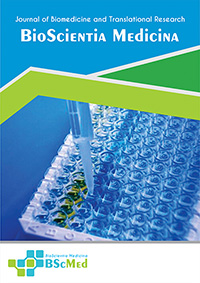Main Article Content
Abstract
Background: Post-stroke cognitive impairment (PSCI) is a common, debilitating outcome of ischemic stroke. Glial Fibrillary Acidic Protein (GFAP), marking astrocyte reactivity, and Vitamin D, a neuro-immunomodulatory steroid, are independently linked to PSCI. This study aimed to quantify the synergistic impact of elevated serum GFAP and concurrent Vitamin D deficiency on PSCI risk.
Methods: Following PRISMA guidelines, a systematic search of PubMed, Scopus, and Web of Science was conducted for prospective cohort studies (2015-2025) assessing acute serum GFAP, 25-hydroxyvitamin D (25(OH)D), and subsequent cognitive outcomes in ischemic stroke patients. Quality was assessed using the Newcastle-Ottawa Scale. A meta-analysis of seven studies (n=3,850) was performed using a random-effects model to calculate pooled odds ratios (ORs) for PSCI across four biomarker-defined groups. A formal test for synergistic interaction was conducted by assessing the departure from additivity of effects on the log-odds scale.
Results: Seven high-quality studies were included. Compared to the reference group (Normal GFAP/Sufficient Vitamin D), the pooled OR for PSCI was 2.18 (95% CI: 1.85-2.57) for high GFAP alone and 1.95 (95% CI: 1.65-2.30) for Vitamin D deficiency alone. For the dual-biomarker group (High GFAP/Deficient Vitamin D), the pooled OR was 4.75 (95% CI: 3.98-5.67). This observed risk was significantly greater than the 3.13 OR expected from a purely additive model (p for interaction < 0.001), confirming a significant synergistic effect. Sensitivity analysis showed the effect was most pronounced in patients with moderate-to-severe strokes (NIHSS > 5).
Conclusion: Elevated serum GFAP and Vitamin D deficiency synergistically increase the risk of PSCI, particularly in patients with more severe strokes. The interplay between acute astroglial injury and compromised systemic neuroprotection appears to be a critical determinant of cognitive outcomes. While confounding by patient frailty requires further study, this dual-biomarker profile identifies a high-risk subgroup and highlights a key pathophysiological interaction.
Keywords
Article Details
As our aim is to disseminate original research article, hence the publishing right is a necessary one. The publishing right is needed in order to reach the agreement between the author and publisher. As the journal is fully open access, the authors will sign an exclusive license agreement.
The authors have the right to:
- Share their article in the same ways permitted to third parties under the relevant user license.
- Retain copyright, patent, trademark and other intellectual property rights including research data.
- Proper attribution and credit for the published work.
For the open access article, the publisher is granted to the following right.
- The non-exclusive right to publish the article and grant right to others.
- For the published article, the publisher applied for the Creative Commons Attribution-NonCommercial-ShareAlike 4.0 International License.





